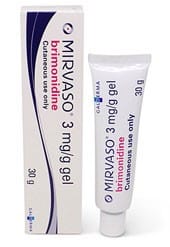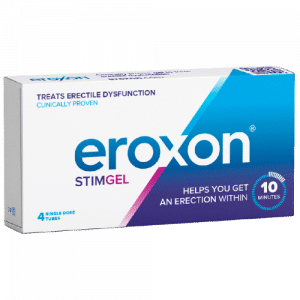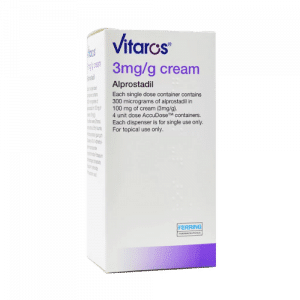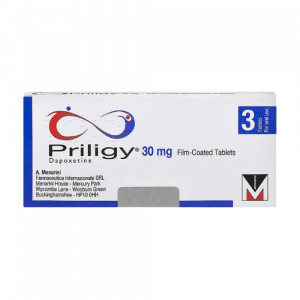
Mirvaso Gel (brimonidine 3mg/1g): Targeted Rosacea Relief
Mirvaso Gel, containing the active ingredient brimonidine, offers a novel approach to managing rosacea symptoms. This prescription-only treatment efficiently reduces facial redness by constricting blood vessels, providing visible improvement within minutes that lasts up to 12 hours. Suitable for adults seeking relief from the discomfort and appearance of rosacea, Mirvaso Gel is applied topically to affected areas, ensuring targeted action with minimal systemic absorption. Start with a small dose to assess tolerance and gradually increase to the recommended amount for safe, effective management of rosacea symptoms.
Mirvaso Gel (brimonidine 3mg/1g)
£20.99 – £60.99
Product Information
About Mirvaso Gel (brimonidine 3mg/1g)

Mirvaso Gel (brimonidine 3mg/1g) is a prescription-only medicine containing the active ingredient brimonidine and is a treatment for rosacea. Rosacea is a condition affecting mainly the face, in which there is increased skin blood flow and redness, as well as red papules, pimples, and pustules. Brimonidine is an alpha blocker, and when applied to reddened areas of skin, it causes the narrowing of blood vessels and reduced surface blood flow. The effects start within a few minutes and last up to 12 hours.
In studies, 7 out of 10 subjects reported reduced rosacea symptoms 3 hours after an application of Mirvaso. This compares with 4 out of 10 subjects reporting improvement when a non-active (dummy) gel was applied.
Mirvaso can worsen symptoms in up to 16% of people and care must be taken when starting treatment – see details below. The redness can get worse soon after Mirvaso is applied or later when the effects are wearing off (after 8 to 12 hrs). In most people, this settles on stopping treatment.
Mirvaso is for adult use, and should not be used by under 18s as it is untested in this lower age group. It should be kept away from young children, who are at risk of dangerous effects if they swallow the gel. In studies, older subjects (65 years and above) responded to treatment in the same way as younger subjects (18-64 years).
How to apply Mirvaso Gel (brimonidine 3mg/1g)
Start treatment with a very small amount of gel (less than the maximum dose) for at least 1 week and build up gradually, based on tolerability and response to treatment. It is important not to exceed the maximum daily dose (which is 1gm of gel in total weight, approximately 5 pea-sized amounts). Apply 1 pea-sized amount to each of the reddened areas of the face; the chin, each cheek, forehead, and nose. Gently smooth as evenly and thinly as possible, over the five areas of the face, avoiding the eyes and lips. Gel should be applied to dry rather than wet skin, to reduce the chance of Mirvaso running into the eyes and mouth. The gel that comes into contact with the eyelids, eyes, lips, or mouth should be washed off with water straight away. Other skin treatments and make-up can be applied once the gel has dried. Wash hands after use to avoid transfer to eyes and mouth and to reduce unwanted constriction of circulation to the hands and fingers. If symptoms worsen, Mirvaso should be stopped and a doctor consulted.
Mirvaso Gel (brimonidine 3mg/1g) side-effects
Mirvaso can make rosacea worse in up to 16% of people, so it is necessary to start with a small amount and slowly build up to the full dose if it is working for you.
Very little of the active ingredient, brimonidine, is absorbed into the general body circulation. Most significant side effects are localised to the skin to which the gel is applied. The most frequent of these are redness and a feeling of burning and itching. There have been reports of significant slow heart rate, low blood pressure, and dizziness after using Mirvaso gel. To reduce absorption, the smallest amount needed should be used and Mirvaso should not be applied to broken skin, particularly after laser therapy, as this can lead to increased absorption and side effects. A full list of possible side effects is detailed in the patient information leaflet.
Mirvaso Gel (brimonidine 3mg/1g) and thread veins
It can often appear that the dilated vessels seem worse when using Mirvaso. This is usually because the thready skin vessels were hidden in the general redness, which has now been improved from using Mirvaso. The thready blood vessels (telangiectasia) are now more obvious.
Who should NOT use Mirvaso Gel (brimonidine 3mg/1g)
Mirvaso constricts blood vessels and is not suitable for people with poor circulation to the hands and feet. There is also a potential for blood pressure to drop and use should be avoided in people with very low blood pressure or a tendency for blood pressure to fall, particularly in people with significant uncontrolled heart disease. Caution is also required in people who have been diagnosed with liver or kidney disease, or depression, either currently or in the past, and people diagnosed with the uncommon dry skin condition, Sjogren’s syndrome, and in people with poor circulation to the brain or heart.
Mirvaso with other medicines
Mirvaso has the potential, in theory at least, to interact with a few other prescription medicines, although the amount absorbed through the skin is minimal.
Do NOT use Mirvaso if taking a Monoamine oxidase inhibitor (MAOI) including selegiline, moclobemide, or imipramine (used to treat depression or Parkinson’s disease).
Discuss with your regular GP before using Mirvaso if taking:
- Any blood pressure medication, including: Beta-blockers; calcium channel blockers; alpha agonists, e.g. clonidine (also used for migraine); alpha-blockers/antagonists, e.g. prazosin (also used for Raynaud’s syndrome & benign prostatic hyperplasia); reserpine; isoprenaline
- Digoxin (for heart conditions)
- Chlorpromazine (for psychiatric disorders)
- Methylphenidate (for ADHD)
Pregnancy and breastfeeding
Mirvaso is untested in pregnant and breastfeeding women, and although there is no known risk, these women should avoid use of Mirvaso.
Alcohol and driving
Regular alcohol use is likely to worsen rosacea and is best avoided. Alcohol may increase the risk of dizziness when using Mirvaso. Mirvaso is not known to affect the ability to drive or operate machinery.
Related Products
-
Erectile dysfunction medication
Eroxon ED Treatment Gel – 4 Pack
Rated 0 out of 5£25.00 Add to basket -
-
-




